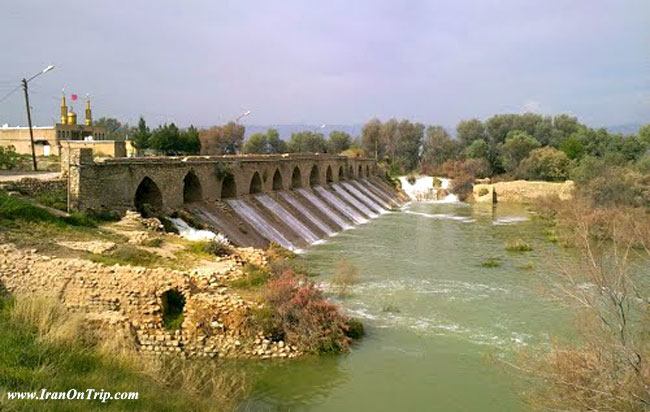Shiraz Band'e Amir

The Amir Dam is an example of the magnificent water engineering works achieved by the old Persian engineers and the only remaining dam from the Buyid dynasty. It is fully functional and provides a small reservoir habitat for fishes. It is located 40 kilometers north east of Shiraz and 15 kilometers south of Marvdasht, situated across the Kor River and adjacent to the Band’e Amir village. Assumed to have been built in the 10th century, it is considered one of the architectural masterpieces of its time. In addition to its solid structure that has stood the test of time, it continues to successfully regulate the flow of the river, a nod to the precise work done in its construction centuries ago.
During the Buyid dynasty, along the Kor River a system of 6 dams were constructed with the Amir Dam being the most important of them. The water passing through these dams was mainly used to irrigate surrounding fields and operate water mills. Some historical documents indicate that the Amir dam was built by the orders of Amir Azdoddoleh Deylami, hence giving it its name.
The structure of the dam consists of two sections; the dam portion and the bridge portion. The main elements used in its construction are rocks connected by metal joints. The dam stretches 120 meters across and was the first connection in the region between the opposite sides of the river.
In the west side of the dam there is a deep rectangular shape opening measuring 10 meters across and 7 meters deep which was used as a way to redirect the flow of water when necessary. When open, the entire flow of the river would be able to be redirected through this canal. Locally known as the Gav-Shir canal, it stretches 40 meters before making a 90 degree turn to the left and continuing for another 800 meters before rejoining the main river again. In recent years 2 hatches have been added to control access to the canal.
Due to its strategic location, water can gather for quite a distance behind the dam and measuring 7 meters deep. As a result a total of 24 villages around the Kor River can gain access to and take advantage of the blocked body of water.
.....
.....
.....

.jpg)



























